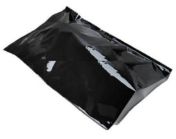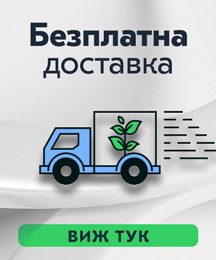Date: 04 Sep 2023
When choosing a pot for a new plant, make sure it has drainage holes and allows the plant to grow.
Buy a pot with a diameter that is at least one inch wider than the diameter of the plant's root mass, and if you expect your plant to grow quickly, use a pot up to four inches wider.
5 standard pot sizes and what to grow in them
Your local garden center or hardware store probably sells pots of various sizes, each suitable for different types of plants. Pots are measured by their diameter.
1. 10-inch pots: A 10-inch diameter pot holds two and a half to three gallons of potting soil. This is a great container size for succulents and herbs, as well as vegetables such as leaf lettuce, strawberries, turnips, beets, baby carrots and flowers such as marigolds and zinnias.
2. 14-inch pots: Containers 14 inches in diameter are good for cabbage, peas, large varieties of carrots, spinach, and hearty leafy greens like kale, lettuce, and Swiss chard.
3. 18-inch pots: This size of pots can hold large vegetables like broccoli, cauliflower, eggplant, zucchini, peppers and tomatoes. It's also the perfect pot for growing berries, shrubs, cacti and even citrus dwarfs.
4. 24-inch pots: These pots hold 24 quarts of soil and can accommodate large houseplants with slightly more extensive root systems. A fig tree with saplings will fit in a 24-inch pot, provided the height of the pot is tall enough (tree roots need room to grow down). Pomegranate, apple and dwarf peach will also fit in pots this size.
5. 30-inch pots: 30-inch pots are massive by most standards and usually serve as nursery pots for trees that will eventually be planted in the ground. Full trees, including pear, apple and plum, can live a lifetime in a 30-inch pot, provided they are properly fertilized.
4 types of pots and how to use them
While the differences between potting materials are mostly aesthetic, there are a few differences that can affect the health of your plants.
1. Plastic pots: These are usually light and cheap and come in many different colors. Plastic pots are better for houseplants, as some types of plastic (especially black) absorb summer heat and can cook your plants' roots. Be careful with the very thin plastic; although plastic does not biodegrade, it does photochemically degrade, meaning that strong sunlight can cause the pot to disintegrate.
2. Terracotta pots: These classic pots made of red clay are standard in container gardening. The porous terracotta material absorbs water from the soil and then dries out, so either pair these plants with drought-tolerant species (such as succulents and rosemary) or plan to water a lot.
3. Glazed Ceramic Pots: These pots are strong, heavy and can be glazed in a wide range of colors. Almost any plant will do well in a glazed ceramic pot. The two disadvantages are higher prices and a tendency to crack at low temperatures.
4. Hanging baskets: Consider this option for small plants, especially succulents. Hanging baskets give plants plenty of drainage, so don't put anything under them that you don't want to get wet.

 New products
New products 

































































 Presents
Presents













Post comment